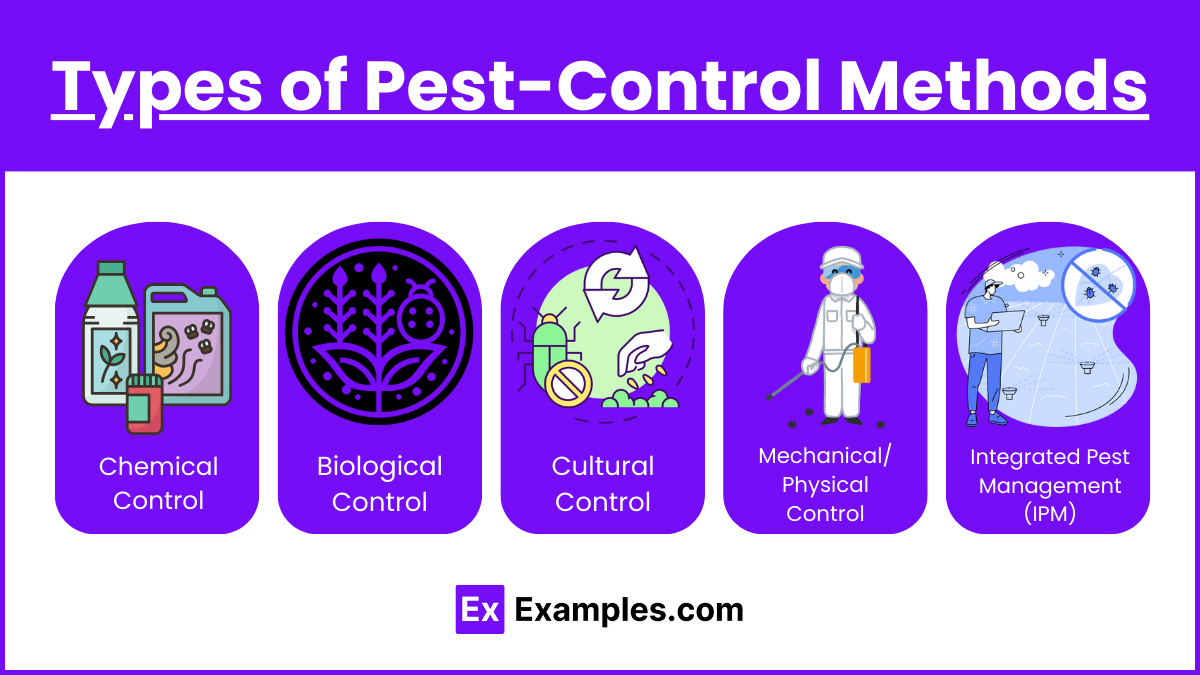Some Of Pest Control
Some Of Pest Control
Blog Article
The Basic Principles Of Pest Control
Table of ContentsThe Main Principles Of Pest Control About Pest ControlNot known Details About Pest Control Not known Details About Pest Control Rumored Buzz on Pest Control
Limitations of Chemical Management Be able to assess insect problems, figure out if monitoring is required, and make ideal recommendations utilizing IPM strategies. Be familiar with different approaches of pest management - their advantages and limitations.This chapter discusses (IPM), a technique that utilizes expertise about parasites and their, methods, nonchemical techniques, and pesticides to handle pest problems. Added information about IPM for specific plants is consisted of in phases that focus on those plants. Nonchemical bug control steps are worried in phase 17, "Organic Gardening." Handling birds and mammals is covered in phase 20, "Wild animals." Handling in the yard and garden is covered in chapter 6, "Weeds." Parasites in a yard or landscape may include pests and termites, weeds,, creatures, and birds.
Pests and weeds, however, play a function in the. After planting a yard or developing a grass, the natural process of plant sequence begins to restore and nonnative plants.
What we call "insects" belong to a natural system at the workplace. A community has no pests. Only people take into consideration specific species parasites when they take place where they are not desired. We will be more effective in managing unwanted types when we recognize that these microorganisms adhere to predictable patterns that we can utilize to our benefit.
Some Of Pest Control
Insects prone to a chemical were rapidly eliminated, leaving immune ones to breed and multiply. It ended up being clear that chemicals alone would certainly not address all insect troubles.
An IPM strategy allows some degree of bugs in the environment. Bugs are much less most likely to endure a program that makes use of many various techniques of minimizing their populaces. Integrated pest administration was first recommended by entomologists because bugs were the first group of bugs to show hard to manage with chemicals alone.
parasite and host accurately. and think about financial or visual injury. A limit is the point at which activity need to be taken. a therapy method making use of mechanical, social, organic, or chemical controls, or a mix of these approaches. success of therapies. IPM has actually expanded beyond bugs to management of all pest populaces: weeds, illness organisms, and creatures.
The 30-Second Trick For Pest Control
Monitoring as opposed to elimination of insects is the objective. An IPM strategy begins with a cautious examination of each parasite infestation. Just then can one choose about the appropriate strategies necessary pop over here to subdue insect tasks. The life cycle of the bug, possible damages, natural adversaries, and effects of weather condition, among various other factors, are considered prior to a control strategy is carried out - Pest Control.
Clover growing in a yard might be considered as an undesirable weed, but as a legume it is synthesizing nitrogen for the soil and the flowers are offering nectar to honey and various other. Resistance for some weeds may belong to an IPM strategy. may be consuming the fallen leaves of a plant, yet when they useful reference are recognized as the larvae of Eastern tiger swallowtail butterflies, their damages may be endured so we can take pleasure in the stunning butterfly.

The second most essential tool in insect administration is very early intervention. Being present and watchful in the garden makes sure very early detection. Reacting to troubles rapidly, prior to they have time to multiply, requires a much less remarkable intervention. The 3rd most vital device is recordkeeping; tracking what happens in the garden enables a garden enthusiast to identify patterns and make educated decisions.
The 45-Second Trick For Pest Control
Numerous risk-free, sensible, nonchemical techniques of plant protection and insect read more management might reduce or remove the demand to spray. Other techniques are most advantageous when used with chemicals. To implement management practices correctly and to lessen losses, gardeners must be mindful of the types of bugs that assault plants and recognize pest biology.

Conducting a dirt examination and applying just the advised amount of plant food and lime makes best use of the benefit to the plant while minimizing problems connected to too much use plant food - Pest Control. Covering the dirt with numerous inches of mulch shields the plant in a number of ways: decreasing soil water loss to evaporation, minimizing weed competitors, offering nutrients, and developing an appropriate setting for earthworms and microorganisms that keep the soil loose for origins and break down organic product to launch nutrients
If mulch touches the trunk, it can create a means for voles, microorganisms, and fungis to attack the plant. Do not use manure or garden compost that has not thoroughly disintegrated as a top dressing due to the fact that it can motivate unfavorable insects. Study suggests that tilling the soil is destructive to soil structure.
What Does Pest Control Do?
If tilling is deemed necessary, think about doing it in the fall when the life process of lots of insects brings them near the surface. At the surface, pests come to be exposed to the weather along with birds and other all-natural opponents. Fall tilling can likewise destroy pests in plant deposits. Use disease-free and insect-free qualified seeds and plants if offered.
Report this page